Joan Palacios
Electrical and Computing Engineering Department, North Carolina State University, Raleigh, NC, USA
Separable multidimensional orthogonal matching pursuit and its application to joint localization and communication at mmWave
Oct 31, 2022Abstract:Greedy sparse recovery has become a popular tool in many applications, although its complexity is still prohibitive when large sparsifying dictionaries or sensing matrices have to be exploited. In this paper, we formulate first a new class of sparse recovery problems that exploit multidimensional dictionaries and the separability of the measurement matrices that appear in certain problems. Then we develop a new algorithm, Separable Multidimensional Orthogonal Matching Pursuit (SMOMP), which can solve this class of problems with low complexity. Finally, we apply SMOMP to the problem of joint localization and communication at mmWave, and numerically show its effectiveness to provide, at a reasonable complexity, high accuracy channel and position estimations.
Hybrid mmWave MIMO Systems under Hardware Impairments and Beam Squint: Channel Model and Dictionary Learning-aided Configuration
Oct 17, 2022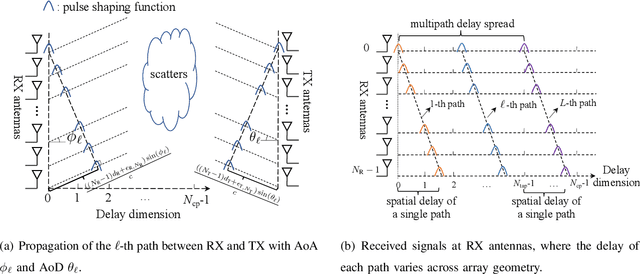
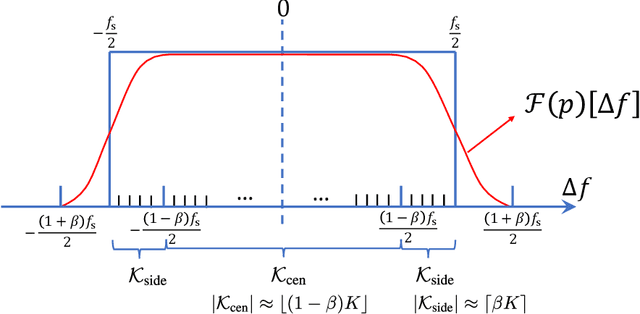
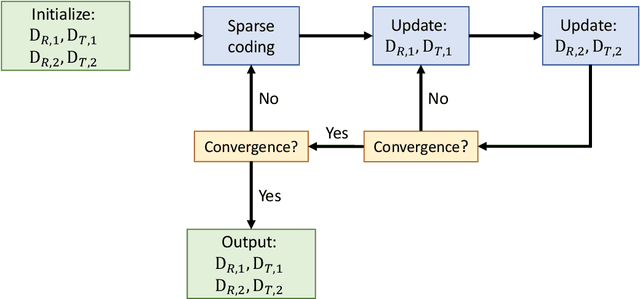
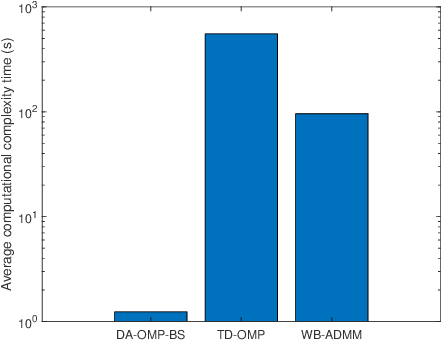
Abstract:Low overhead channel estimation based on compressive sensing (CS) has been widely investigated for hybrid wideband millimeter wave (mmWave) multiple-input multiple-output (MIMO) systems. The channel sparsifying dictionaries used in prior work are built from ideal array response vectors evaluated on discrete angles of arrival/departure. In addition, these dictionaries are assumed to be the same for all subcarriers, without considering the impacts of hardware impairments and beam squint. In this manuscript, we derive a general channel and signal model that explicitly incorporates the impacts of hardware impairments, practical pulse shaping functions, and beam squint, overcoming the limitations of mmWave MIMO channel and signal models commonly used in previous work. Then, we propose a dictionary learning (DL) algorithm to obtain the sparsifying dictionaries embedding hardware impairments, by considering the effect of beam squint without introducing it into the learning process. We also design a novel CS channel estimation algorithm under beam squint and hardware impairments, where the channel structures at different subcarriers are exploited to enable channel parameter estimation with low complexity and high accuracy. Numerical results demonstrate the effectiveness of the proposed DL and channel estimation strategy when applied to realistic mmWave channels.
Multidimensional orthogonal matching pursuit: theory and application to high accuracy joint localization and communication at mmWave
Aug 24, 2022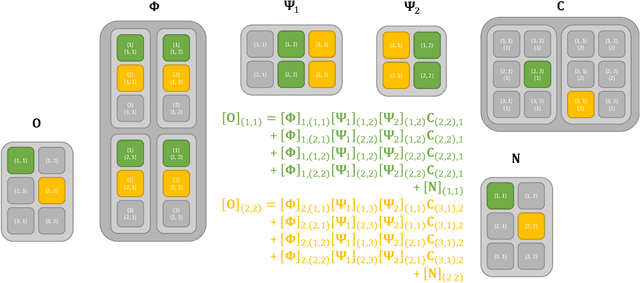
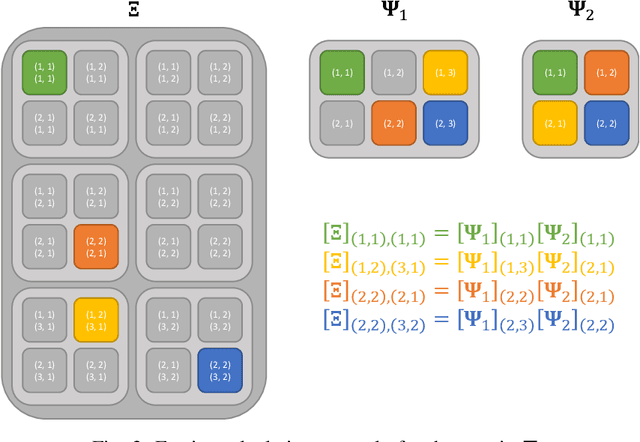
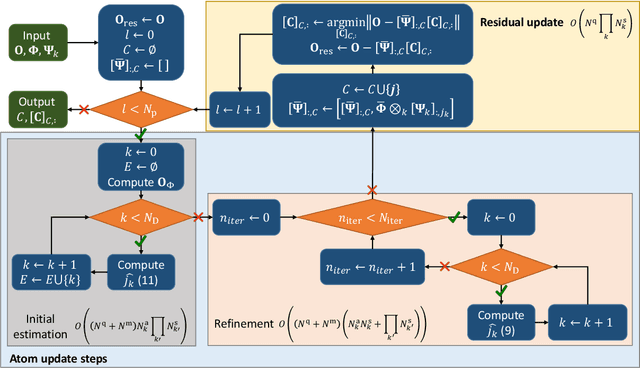
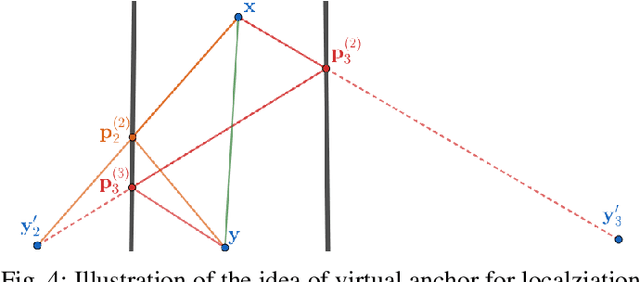
Abstract:Greedy approaches in general, and orthogonal matching pursuit in particular, are the most commonly used sparse recovery techniques in a wide range of applications. The complexity of these approaches is highly dependent on the size of the dictionary chosen to represent the sparse signal. When the dictionary has to be large to enable high accuracy reconstructions, greedy strategies might however incur in prohibitive complexity. In this paper, we propose first the formulation of a new type of sparse recovery problems where the sparse signal is represented by a set of independent and smaller dictionaries instead of a large single one. Then, we derive a low complexity multdimensional orthogonal matching pursuit (MOMP) strategy for sparse recovery with a multdimensional dictionary. The projection step is performed iteratively on every dimension of the dictionary while fixing all other dimensions to achieve high accuracy estimation at a reasonable complexity. Finally, we formulate the problem of high resolution time domain channel estimation at millimeter wave (mmWave) frequencies as a multidimensional sparse recovery problem that can be solved with MOMP. The channel estimates are later transformed into high accuracy user position estimates exploiting a new localization algorithm that leverages the particular geometry of indoor channels. Simulation results show the effectiveness of MOMP for high accuracy localization at millimeter wave frequencies when operating in realistic 3D scenarios, with practical MIMO architectures feasible at mmWave, and without resorting to perfect synchronization assumptions that simplify the problem.
Low complexity joint position and channel estimation at millimeter wave based on multidimensional orthogonal matching pursuit
Apr 07, 2022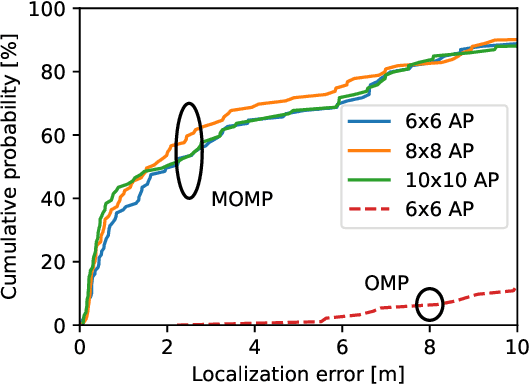

Abstract:Compressive approaches provide a means of effective channel high resolution channel estimates in millimeter wave MIMO systems, despite the use of analog and hybrid architectures. Such estimates can also be used as part of a joint channel estimation and localization solution. Achieving good localization performance, though, requires high resolution channel estimates and better methods to exploit those channels. In this paper, we propose a low complexity multidimensional orthogonal matching pursuit strategy for compressive channel estimation based by operating with a product of independent dictionaries for the angular and delay domains, instead of a global large dictionary. This leads to higher quality channel estimates but with lower complexity than generalizations of conventional solutions. We couple this new algorithm with a novel localization formulation that does not rely on the absolute time of arrival of the LoS path and exploits the structure of reflections in indoor channels. We show how the new approach is able to operate in realistic 3D scenarios to estimate the communication channel and locate devices in an indoor simulation setting.
Joint Initial Access and Localization in Millimeter Wave Vehicular Networks: a Hybrid Model/Data Driven Approach
Apr 04, 2022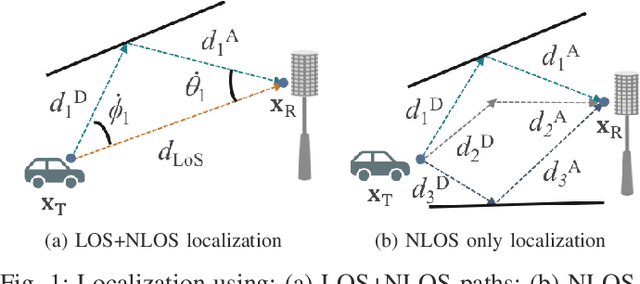
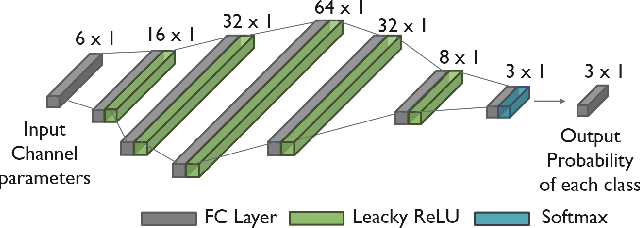

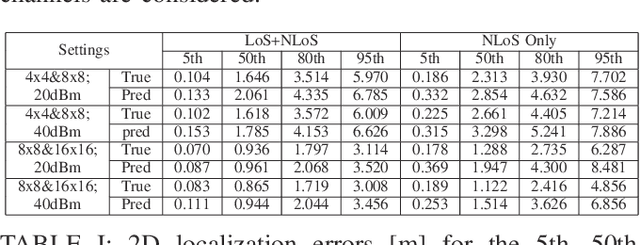
Abstract:High resolution compressive channel estimation provides information for vehicle localization when a hybrid mmWave MIMO system is considered. Complexity and memory requirements can, however, become a bottleneck when high accuracy localization is required. An additional challenge is the need of path order information to apply the appropriate geometric relationships between the channel path parameters and the vehicle, RSU and scatterers position. In this paper, we propose a low complexity channel estimation strategy of the angle of departure and time difference of arrival based on multidimensional orthogonal matching pursuit. We also design a deep neural network that predicts the order of the channel paths so only the LoS and first order reflections are used for localization. Simulation results obtained with realistic vehicular channels generated by ray tracing show that sub-meter accuracy can be achieved for 50% of the users, without resorting to perfect synchronization assumptions or unfeasible all-digital high resolution MIMO architectures.
Multidimensional Orthogonal Matching Pursuit-based RIS-aided Joint Localization and Channel Estimation at mmWave
Mar 24, 2022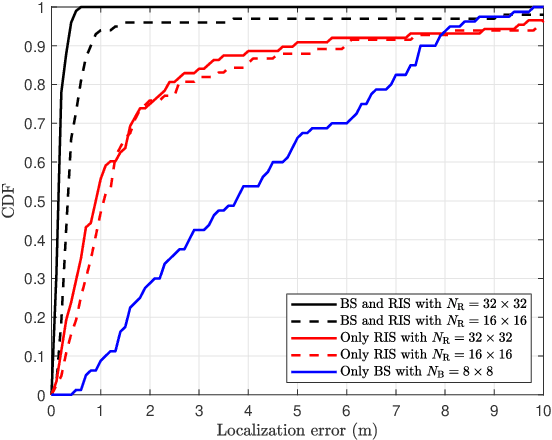
Abstract:RIS-aided millimeter wave wireless systems benefit from robustness to blockage and enhanced coverage. In this paper, we study the ability of RIS to also provide enhanced localization capabilities as a by-product of communication. We consider sparse reconstruction algorithms to obtain high resolution channel estimates that are mapped to position information. In RIS-aided mmWave systems, the complexity of sparse recovery becomes a bottleneck, given the large number of elements of the RIS and the large communication arrays. We propose to exploit a multidimensional orthogonal matching pursuit strategy for compressive channel estimation in a RIS-aided millimeter wave system. We show how this algorithm, based on computing the projections on a set of independent dictionaries instead of a single large dictionary, enables high accuracy channel estimation at reduced complexity. We also combine this strategy with a localization approach which does not rely on the absolute time of arrival of the LoS path. Localization results in a realistic 3D indoor scenario show that RIS-aided wireless system can also benefit from a significant improvement in localization accuracy.
Millimeter Wave Localization with Imperfect Training Data using Shallow Neural Networks
Dec 09, 2021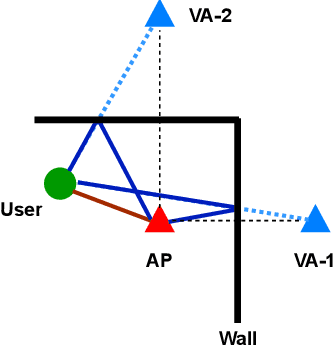
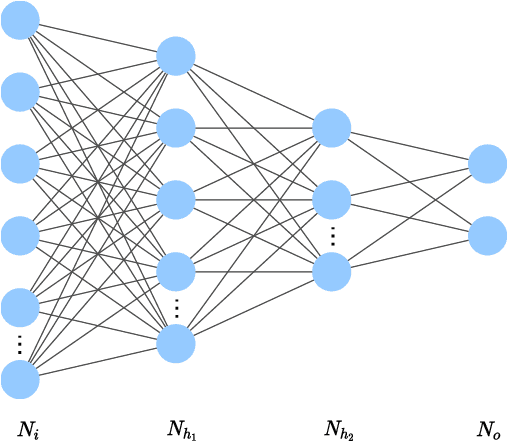
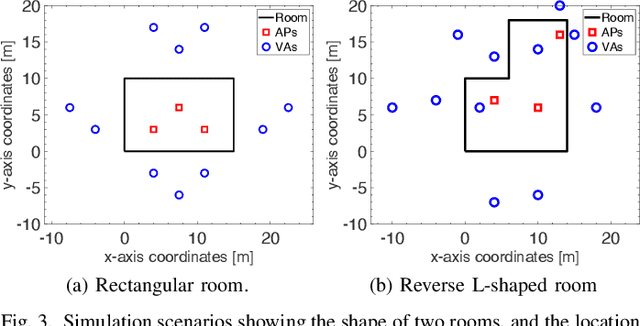
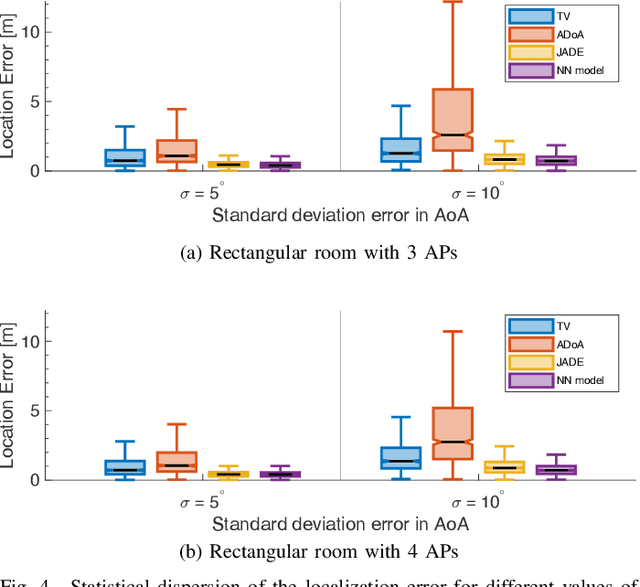
Abstract:Millimeter wave (mmWave) localization algorithms exploit the quasi-optical propagation of mmWave signals, which yields sparse angular spectra at the receiver. Geometric approaches to angle-based localization typically require to know the map of the environment and the location of the access points. Thus, several works have resorted to automated learning in order to infer a device's location from the properties of the received mmWave signals. However, collecting training data for such models is a significant burden. In this work, we propose a shallow neural network model to localize mmWave devices indoors. This model requires significantly fewer weights than those proposed in the literature. Therefore, it is amenable for implementation in resource-constrained hardware, and needs fewer training samples to converge. We also propose to relieve training data collection efforts by retrieving (inherently imperfect) location estimates from geometry-based mmWave localization algorithms. Even in this case, our results show that the proposed neural networks perform as good as or better than state-of-the-art algorithms.
A Dynamic Codebook Design for Analog Beamforming in MIMO LEO Satellite Communications
Nov 16, 2021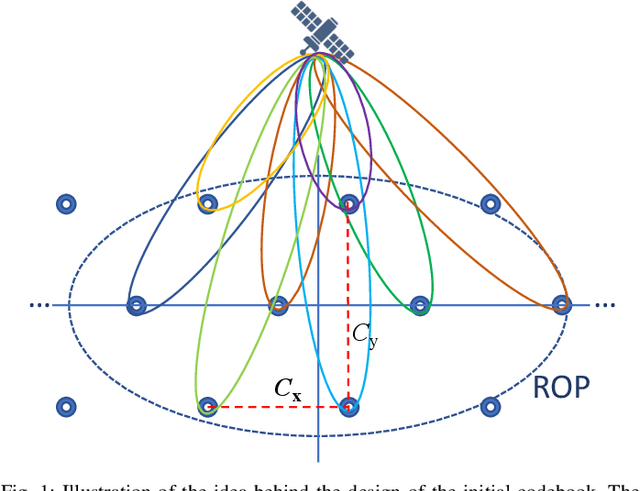

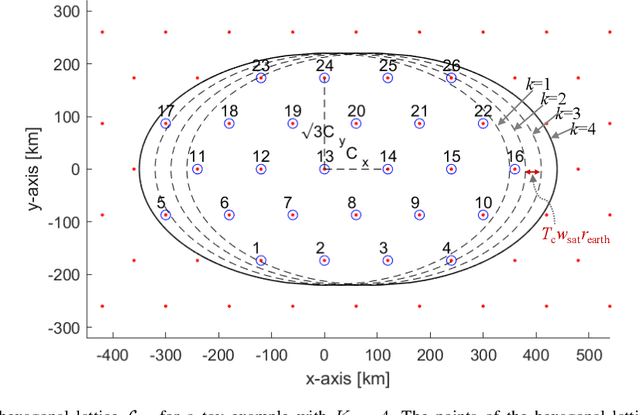

Abstract:Beamforming gain is a key ingredient in the performance of LEO satellite communication systems to be integrated into cellular networks. However, beam codebooks previously designed in the context of MIMO communication for terrestrial networks, do not provide the appropriate performance in terms of inter-beam interference and gain stability as the satellite moves. In this paper, we propose a dynamic codebook that provides a stable gain during the period of time that the satellite covers a given cell, while avoiding link retraining and extra calculation as the satellite moves. In addition, the proposed codebook provides a higher signal-to-interference-plus-noise (SINR) ratio than those DFT codebooks commonly used in cellular systems.
A hybrid beamforming design for massive MIMO LEO satellite communications
Apr 22, 2021
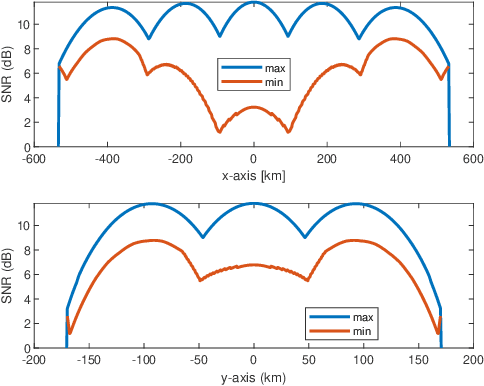

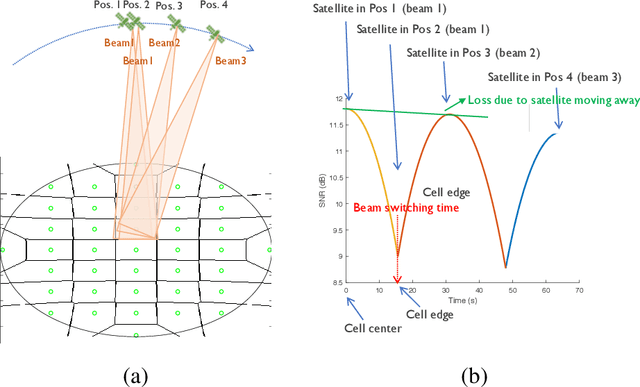
Abstract:5G and future cellular networks intend to incorporate low earth orbit (LEO) satellite communication systems (SatCom) to solve the coverage and availability problems that cannot be addressed by satellite-based or ground-based infrastructure alone. This integration of terrestrial and non terrestrial networks poses many technical challenges which need to be identified and addressed. To this aim, we design and simulate the downlink of a LEO SatCom compatible with 5G NR, with a special focus on the design of the beamforming codebook at the satellite side. The performance of this approach is evaluated for the link between a LEO satellite and a mobile terminal in the Ku band, assuming a realistic channel model and commercial antenna array designs, both at the satellite and the terminal. Simulation results provide insights on open research challenges related to analog codebook design and hybrid beamforming strategies, requirements of the antenna terminals to provide a given SNR, or required beam reconfiguration capabilities among others.
 Add to Chrome
Add to Chrome Add to Firefox
Add to Firefox Add to Edge
Add to Edge